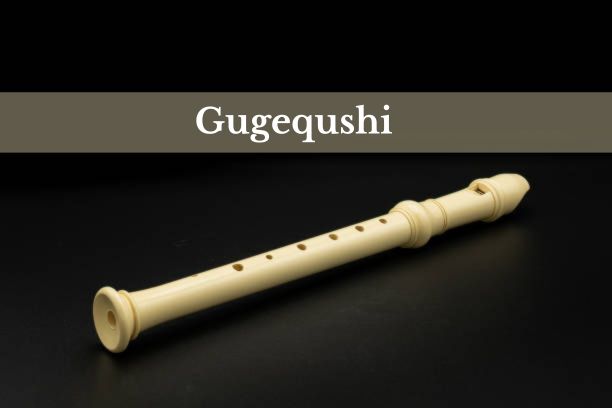Introduction to Gugequshi
Gugequshi, the ancient art of playing the bone flute, is a fascinating and culturally rich tradition that dates back thousands of years in Chinese history. This unique musical practice not only showcases the ingenuity of ancient Chinese musicians but also provides a window into the spiritual and cultural life of early civilizations. In this article, we’ll delve into the origins, significance, and techniques of Gugequshi, as well as its enduring legacy in modern times.
What is Gugequshi?
Gugequshi refers to the art of playing the gudi, or bone flute, an ancient Chinese wind instrument made from animal bones. This practice is deeply rooted in Chinese history and is considered one of the earliest forms of musical expression.
The Origins of Gugequshi
The origins of Gugequshi can be traced back to the Neolithic period, around 7000–9000 years ago. Archaeological discoveries of bone flutes in China provide evidence of its ancient roots.
Cultural Significance of Gugequshi
Gugequshi holds immense cultural significance as it reflects the spiritual beliefs, rituals, and daily life of ancient Chinese communities. It was often used in ceremonies, celebrations, and communication with the divine.
The Bone Flute: An Instrument of History
The bone flute, or gudi, is the centerpiece of Gugequshi. Let’s explore its construction, design, and role in ancient music.
Materials and Construction
Bone flutes were typically made from the bones of birds or other animals. These materials were chosen for their durability and ability to produce clear, resonant tones.
Design and Structure
The bone flute features a simple yet effective design, with finger holes carved into the bone to create different pitches. Its compact size made it easy to carry and play.
The Role of the Bone Flute in Ancient Music
The bone flute was not just a musical instrument but also a tool for storytelling, ritualistic practices, and communal bonding. Its melodies were believed to connect humans with nature and the spiritual realm.
Techniques of Gugequshi
Mastering Gugequshi requires skill, practice, and an understanding of traditional techniques. Here’s an overview of how the bone flute is played.
Breathing and Embouchure
Playing the bone flute involves controlled breathing and precise embouchure (mouth positioning) to produce clear and consistent tones.
Finger Placement and Melodies
The placement of fingers on the flute’s holes determines the pitch and melody. Gugequshi musicians use a combination of finger movements to create intricate tunes.
Traditional Songs and Compositions
Many traditional Gugequshi compositions are inspired by nature, mythology, and ancient Chinese folklore. These pieces often evoke a sense of tranquility and connection to the past.
The Cultural Legacy of Gugequshi
Gugequshi has left a lasting impact on Chinese culture and continues to inspire musicians and historians today.
Influence on Chinese Music
The techniques and melodies of Gugequshi have influenced various forms of Chinese music, including classical and folk traditions.
Preservation of Gugequshi
Efforts are being made to preserve and revive Gugequshi as part of China’s intangible cultural heritage. Museums, cultural organizations, and musicians are working to keep this ancient art alive.
Gugequshi in Modern Times
While Gugequshi is an ancient practice, it has found a place in contemporary culture.
Revival of Interest
In recent years, there has been a renewed interest in Gugequshi, with musicians and scholars exploring its historical and artistic value.
Gugequshi in Contemporary Music
Some modern musicians incorporate the bone flute and its techniques into their compositions, blending ancient and contemporary styles.
Learning Gugequshi Today
For those interested in learning Gugequshi, there are resources and opportunities available.
Finding a Teacher
Learning Gugequshi requires guidance from experienced musicians who understand its techniques and traditions.
Online Resources and Workshops
Online tutorials, workshops, and cultural programs offer opportunities to learn about Gugequshi and its history.
The Spiritual and Meditative Aspects of Gugequshi
Gugequshi is not just about music; it also has spiritual and meditative qualities.
Connection to Nature
The melodies of the bone flute often mimic natural sounds, creating a sense of harmony with the environment.
Meditation and Healing
In ancient times, Gugequshi was believed to have healing properties and was used in meditation practices to promote inner peace.
Conclusion
Gugequshi is a remarkable testament to the creativity and cultural richness of ancient Chinese civilization. Its melodies, techniques, and spiritual significance continue to captivate and inspire people around the world. By exploring and preserving Gugequshi, we honor the legacy of our ancestors and keep their traditions alive for future generations.
FAQs
1. What is Gugequshi?
Gugequshi is the ancient Chinese art of playing the bone flute, a tradition that dates back thousands of years.
2. How old is Gugequshi?
Gugequshi originated during the Neolithic period, around 7000–9000 years ago.
3. What is a bone flute made of?
Bone flutes are typically made from the bones of birds or other animals, chosen for their durability and tonal quality.
4. Can I learn Gugequshi today?
Yes, there are resources, teachers, and workshops available for those interested in learning Gugequshi.
5. Why is Gugequshi important?
Gugequshi is important for its cultural, historical, and spiritual significance, offering insights into ancient Chinese life and traditions.

